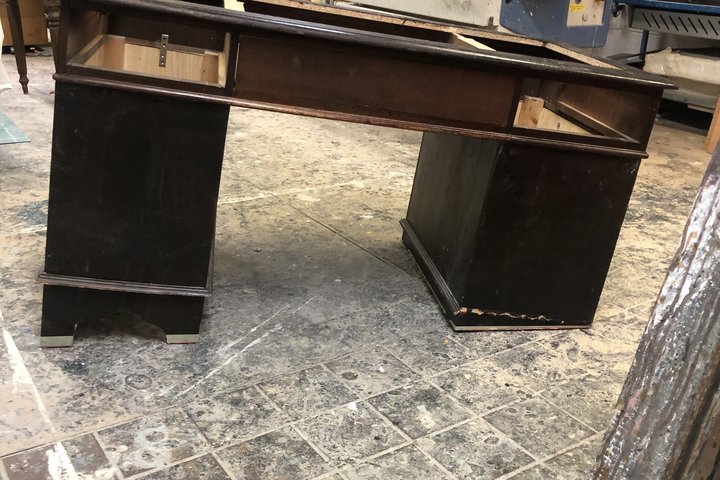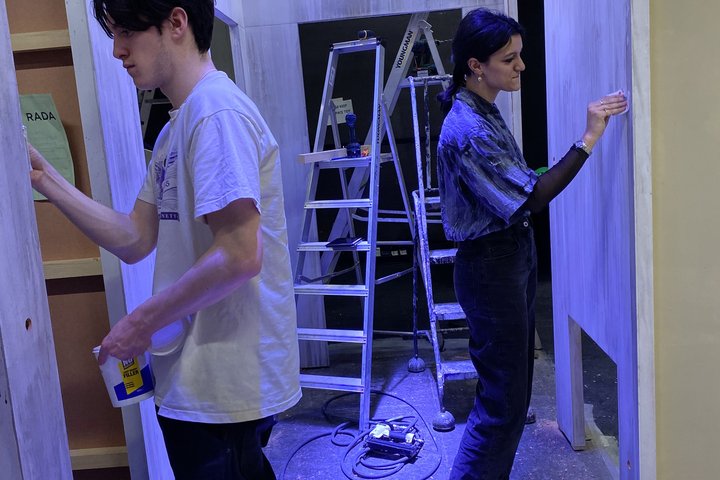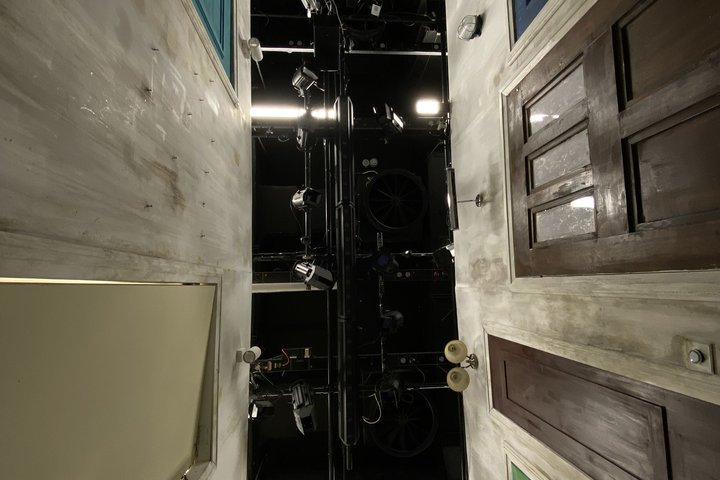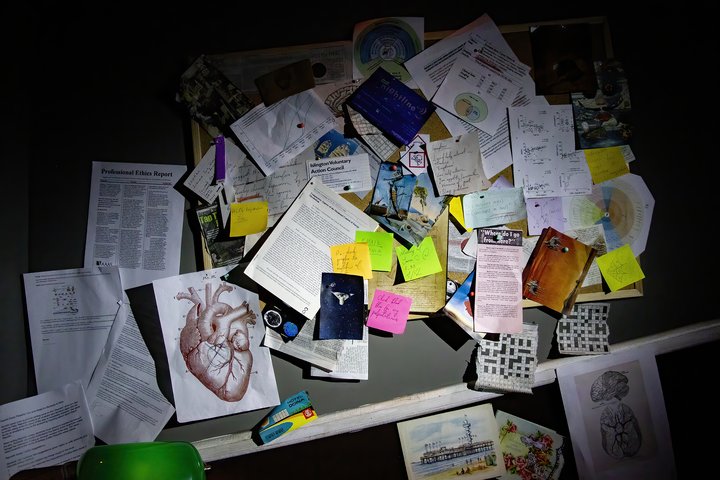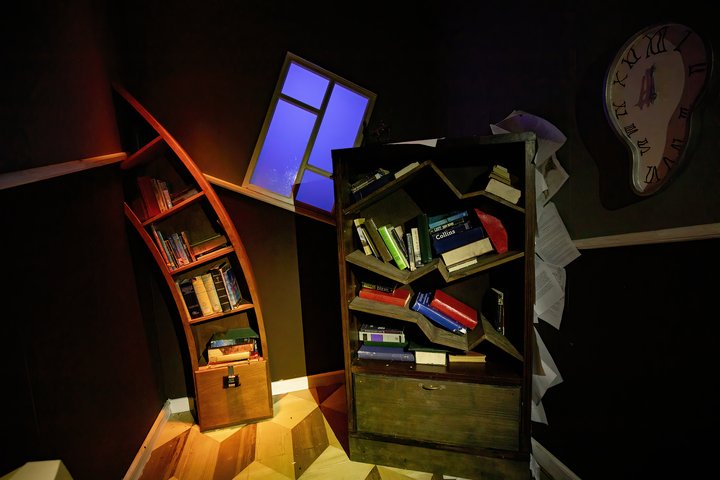Flat 11B – How we created RADA’s latest ‘escape room’ project by Spiky Saul
At RADA, we believe that for anyone to successfully specialise in one area of the production arts, they must first be grounded in all areas. Students on our BA (Hons) and FdA in Technical theatre and Stage Management train in all areas of the production arts, from scenic art to stage management, from lighting and sound to prop-making. Our courses offer extensive opportunities to work on RADA's live events, exhibitions and showcases, including creating a public escape room experience.
This spring, our Technical Theatre and Stage Management students created an escape room called Flat 11B. The experience is set in the aftermath of an explosion at a laboratory, where some essential vials have gone missing, along with the mysterious Dr Reid. Participants must work together as a team to break into Dr Reid's flat, solve the mystery and recover the vials.
We caught up with the concept writer, director and designer of Flat 11B, second-year FdA in Technical Theatre & Stage Management student Spiky Saul, to find out about her experience of working on this project.
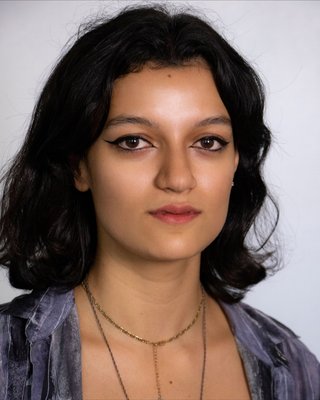
What was the inspiration behind Flat 11B?
It’s actually very much based on my flat. I’m currently living in a shared flat with a long corridor and I don’t really know who I live with! I got the main idea from that. I also really love the idea of dreams meeting reality so I went to the library and dug out all of the books on surrealism that they had – lots of parts of it are influenced by surrealist paintings. For example, in one room we have a Salvador Dali clock made by one of our third-year prop makers, and in the final room, we introduced a video game (with joysticks and a motion sensor) where your character is just a floating eyeball, and you have to create a face out of objects you collect around a desert landscape. The overall idea is that the whole experience of the escape room was a dream.
Tell us a bit about your role on the project.
I’m the writer, director and designer. At RADA, I’m specialising in Scenic Art and Design. I’ve directed before, but this is my first time designing. This is the biggest project I’ve worked on as the primary creative so far.
Talk us through the creative process.
The design process is similar to that of making a theatre show. You start off with some ideas and make a white card model, which is a 3D prototype that contains all the most essential information on space, structure, movable elements and their practical implications. You show this to the other departments and discuss what’s possible.
From there, you paint a model box and make it technically accurate. Everything has to be in 1:25 scale, so you’re making these tiny pieces of furniture that have to be exact to the millimetre, which is really tricky but quite fun. You show the final model to the students and staff in each department and then everyone just gets to work. I spent about a week sitting with my Head of Construction on the architectural drawings, discussing changes we’d need to make. That was a long process. During all of this, I was also writing the script. It’s very strange working on a project where the story is based around the design rather than the other way.
The escape room project is one of the biggest technical shows of the year so I felt it was really important that each department had space to showcase what they could do. The first room is for lighting, the “office” is for props and the “bedroom” is for sound and video.
We also had Simon Morgan who works with Clockwork Dog – an escape room company – come on board as a puzzles consultant and production manager. Clockwork Dog have created a software called Cogs and we got to use it on this project, which was really cool, and they also let us borrow some of their hardware. It’s really interesting, cutting-edge software that allows you to program the puzzles to cue sound and lights as well as unlocking mag-locks and cueing RFID tags and reed switches. It's amazing because the games master can cue a whole sequence by seeing that the players have put an object in the correct place. I sat down in a room with Simon for about 7 hours and we wrote down all of the puzzles we could possibly think of that would work with the flow of the rooms. It was probably one of the longest days of my life, sitting there for hours trying to come up with complicated and confusing puzzles!
Once everyone is working on the project, the design workload becomes a bit easier. There’s still a lot to do but it’s more running around different departments, confirming which lamp you would like or the angle of furniture or which shade of paint is correct. I was still rewriting the plot and cutting games down right up until just before the first test group went in.
What was it like taking on the roles of writer, director and designer on this project?
It was really exciting! I really thrive on that sort of thing. I was completely stressed, and it was really fun anyway and it’s turned out really well. I really enjoy having that creative control. It’s up now and looks fantastic, we’ve had trial groups in and they all really like it.
Were there any particular challenges?
It’s weird from a creative perspective to have no actors. Usually you have people to focus your creativity around, but here you have to predict what the players are going to do when they enter each room, like how they will press a button or find clues. When we were tech-ing it, we went through each of the rooms and had to make assumptions about how people would act. Once the test groups came in, it was confirmation that people just don’t do it the way you think they’re going to at all.
Another challenge was coming up with the ideas for the puzzles whilst also putting your own spin on them. Quite a lot escape rooms don’t use the puzzles to further the story but, because this is a drama school project, I wanted it to be as theatrical as possible.
What was rewarding about the experience?
Having people come in and actually do the escape room experience. We’ve been having really fantastic feedback and that is so gratifying. Also, working together with the other technical students was such a joy, it was ridiculously fun. Everyone has worked so tirelessly to create this and it’s amazing to see people bring all the ideas to life. During Build Week, when they were installing the set, I stood there thinking “I can’t believe these people are just making things from my brain!" It was very strange.
What have you learnt from doing Flat 11b?
It’s a really important project for RADA to do. It’s been good for all of us, getting to work on something so technically heavy. Being able to do a show that is entirely tech is so valuable for our training. Everyone gets their moment. So we got to do our thing without having to worry about the dynamic of a full theatre production and think more about the audience experience.
And personally I’ve learnt so much. Doing this project hasn’t been a walk in the park but it’s taught me about my own limits and given me plenty of ideas for the future.
View the full creative team for Flat 11B here.
Next year...
Missed out on tickets for Flat 11B? Don’t worry, there’ll be another escape room experience designed by our Technical Theatre and Stage Management students next year! Sign up to our mailing list to stay in the know.

